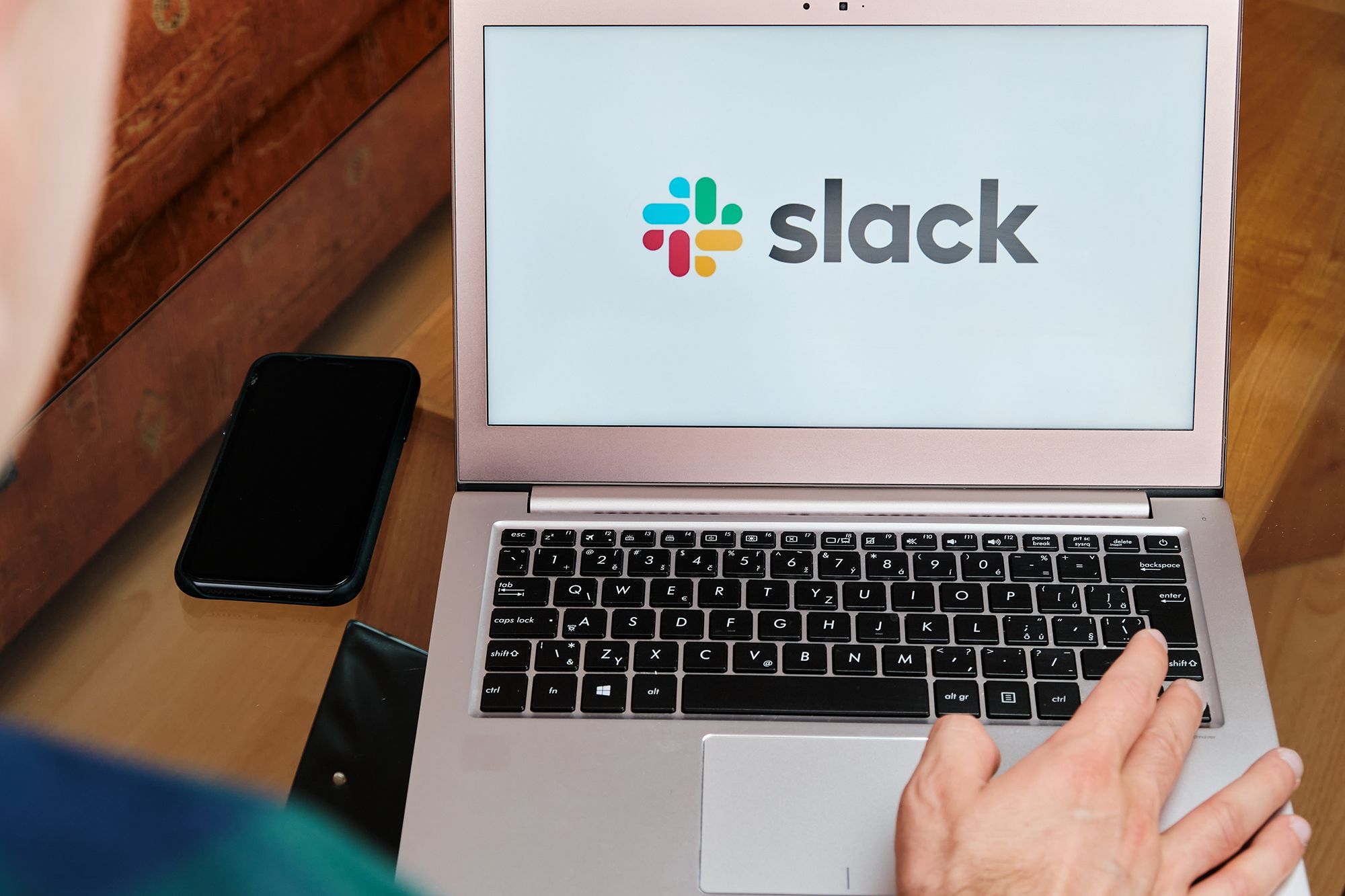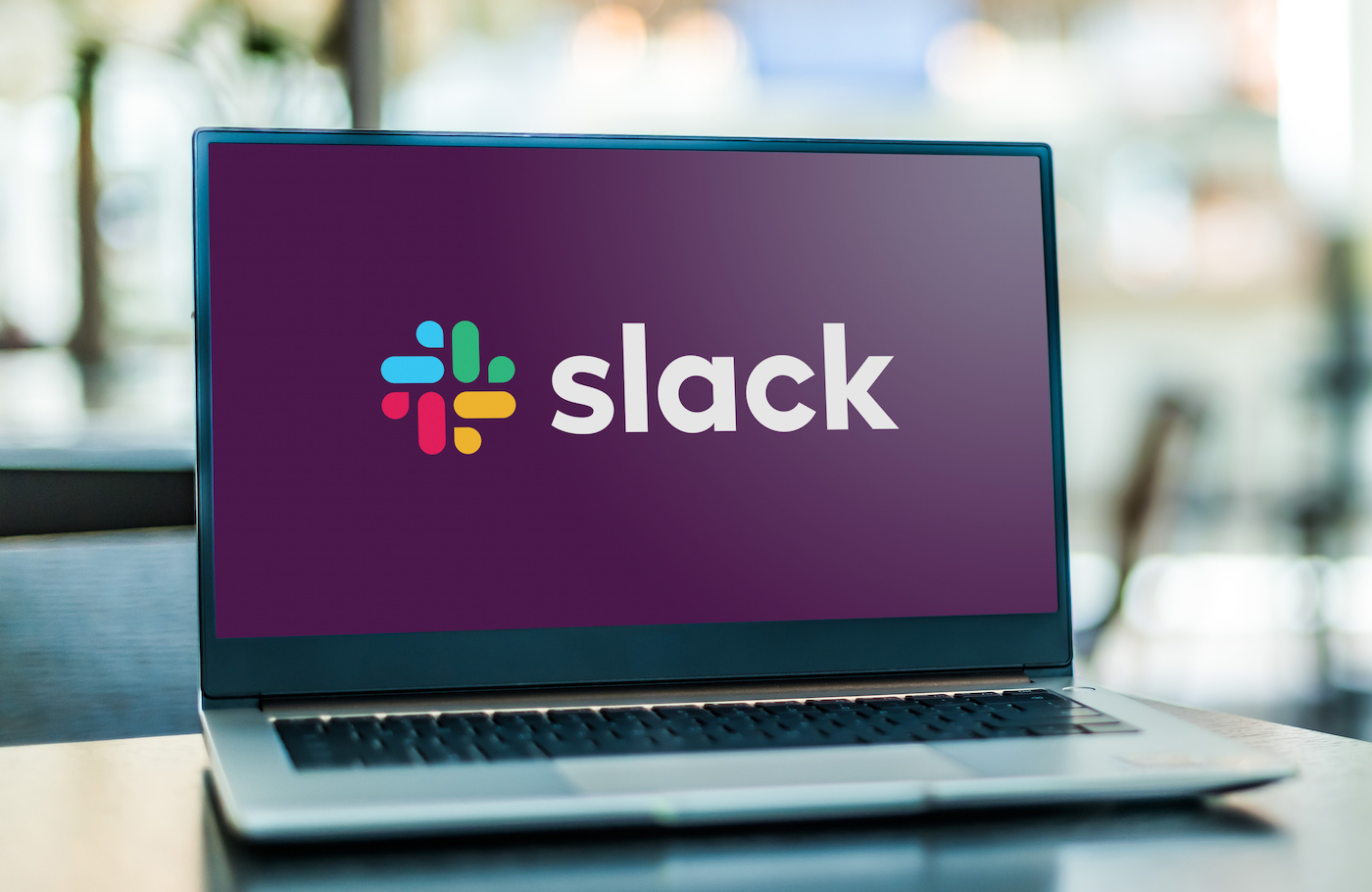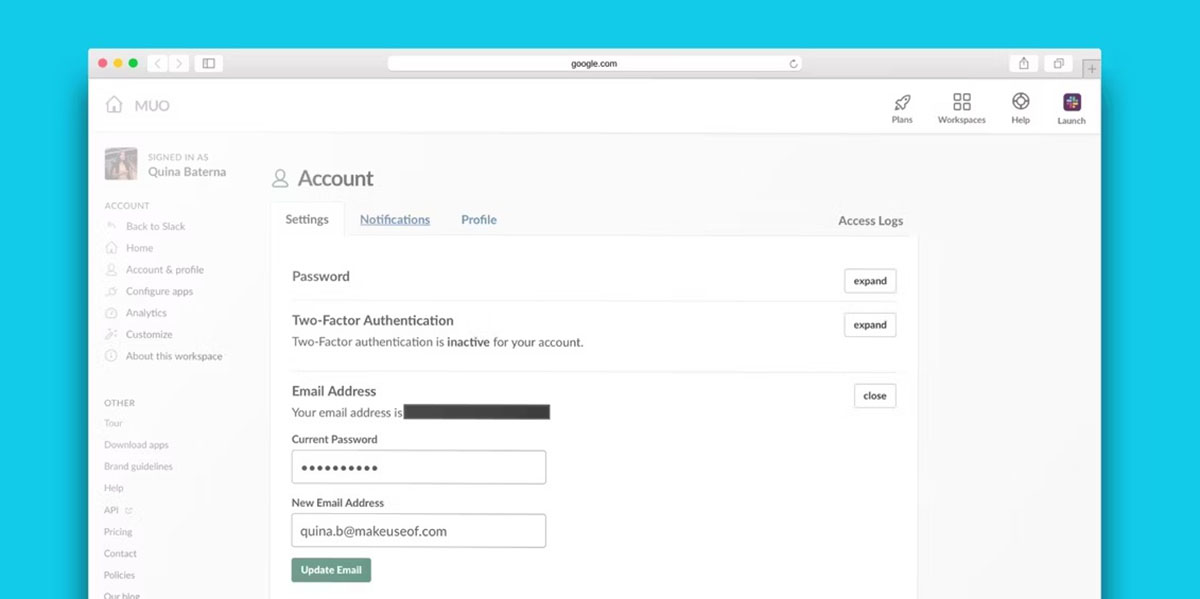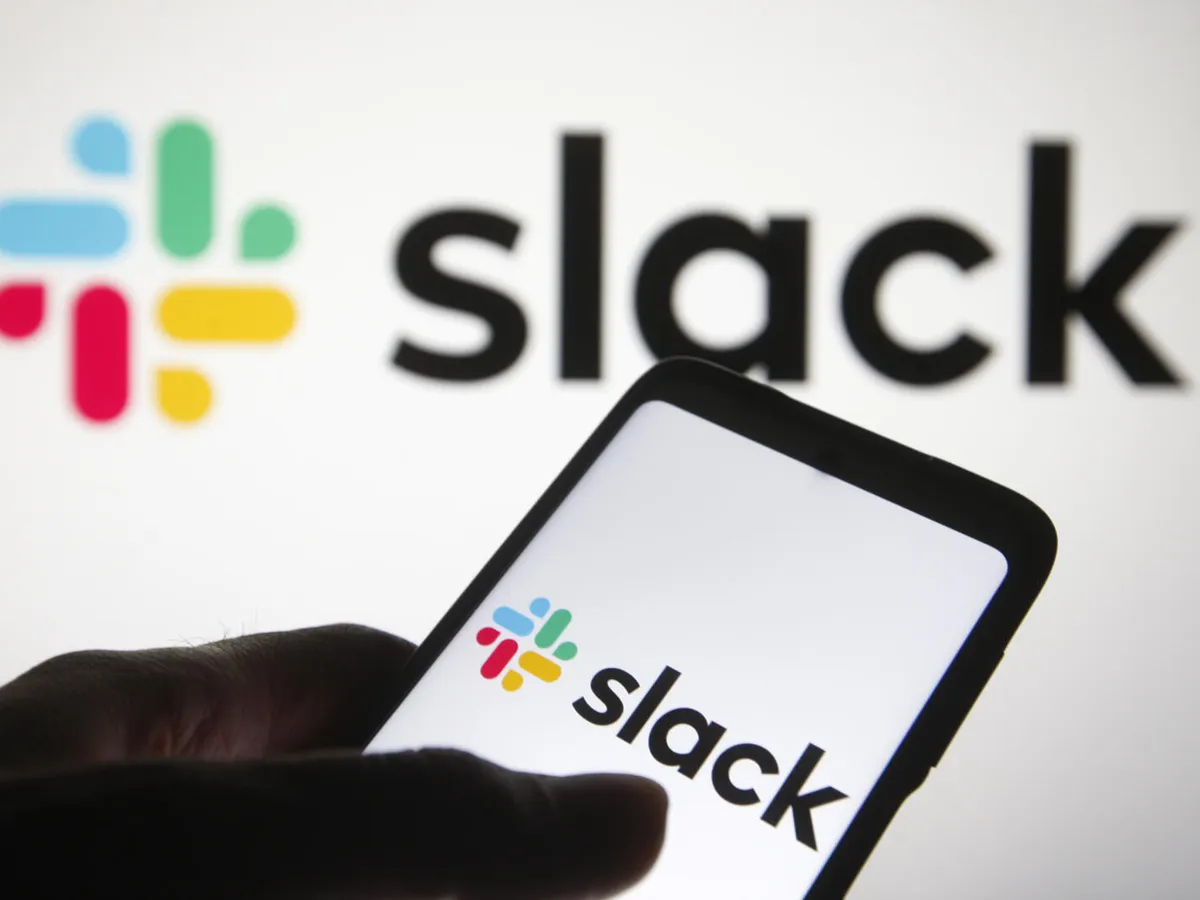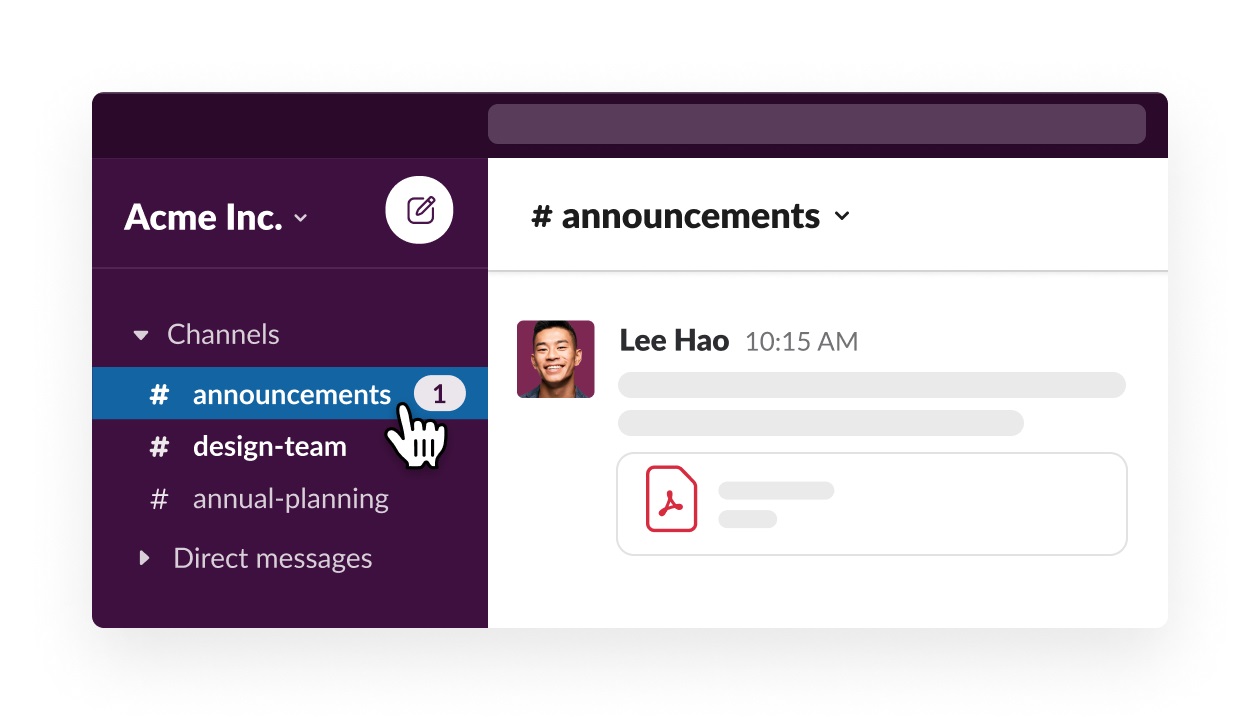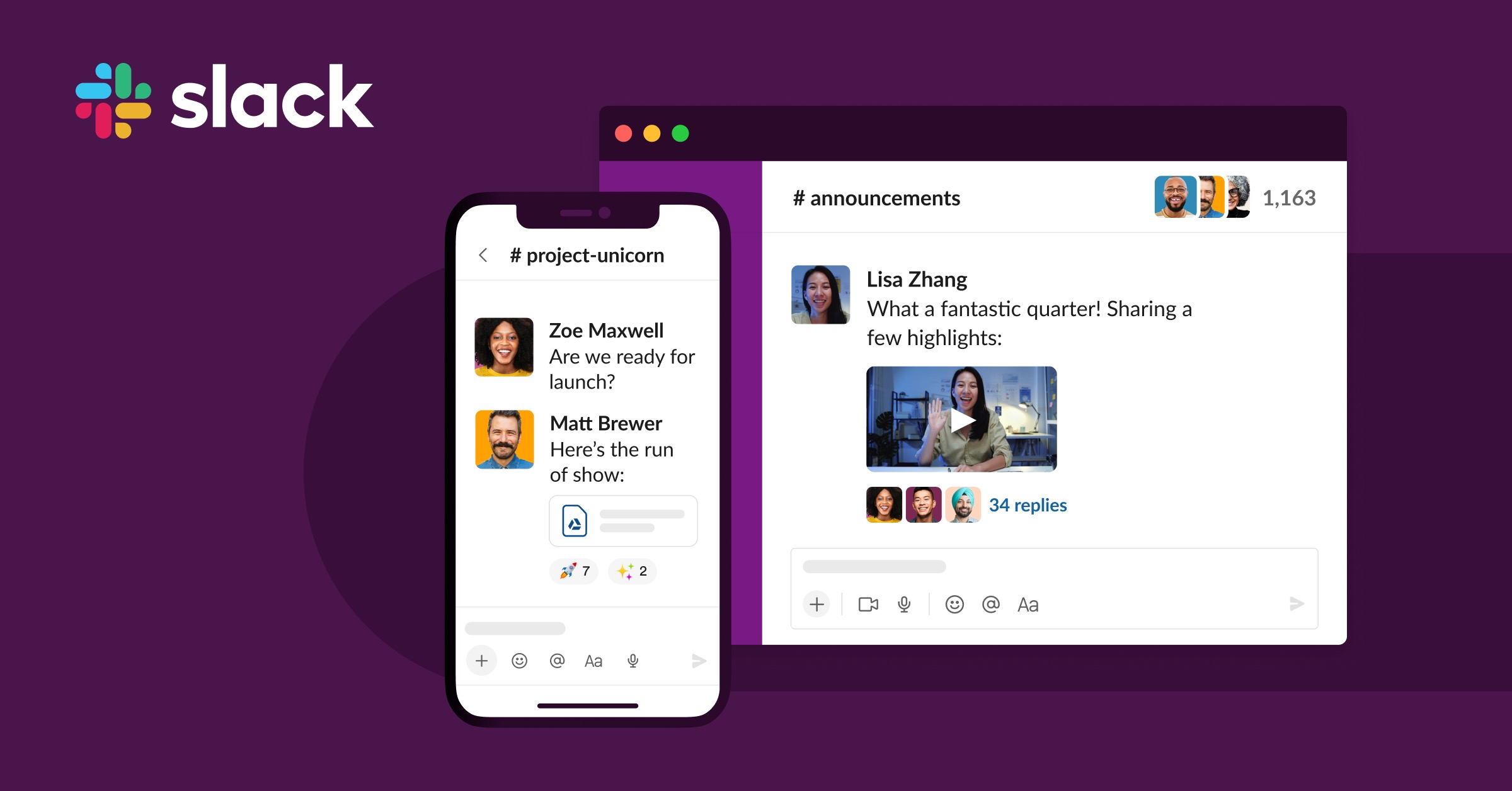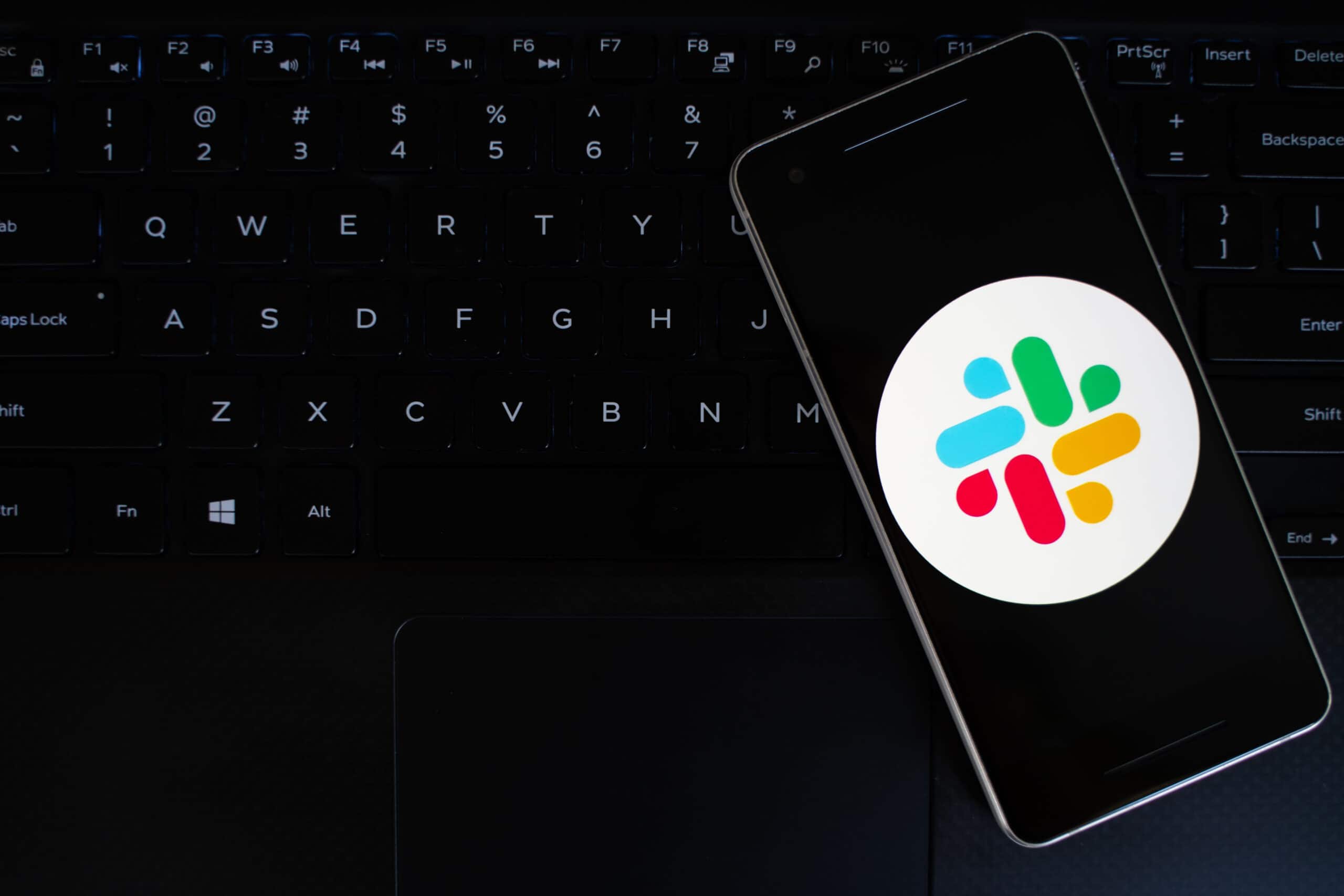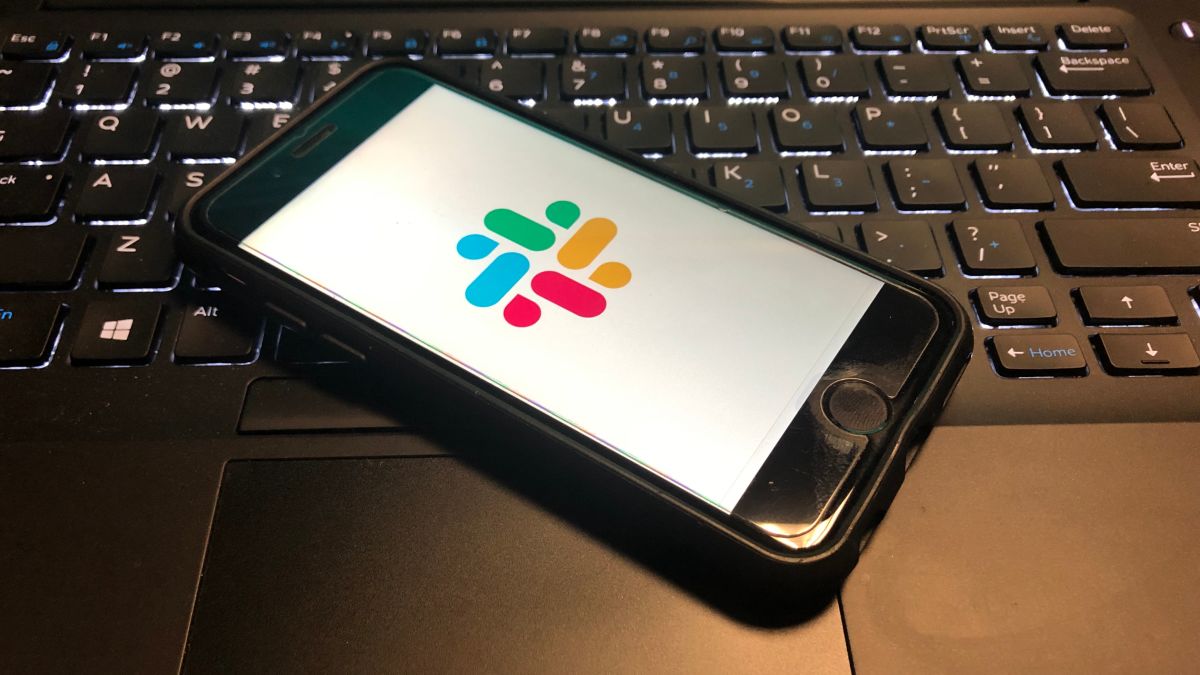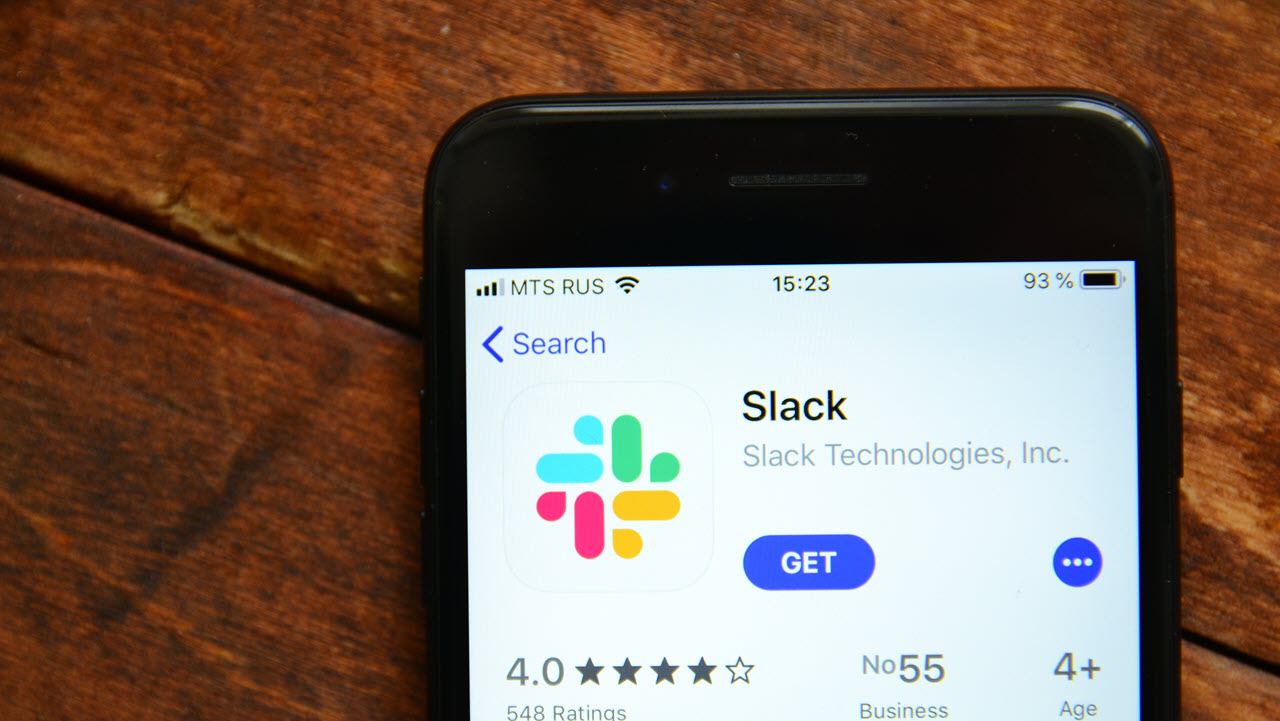Introduction
Welcome to the world of communication and collaboration in the digital age. As technology continues to evolve, so does the way we connect with others and share information. Two popular tools that have revolutionized communication within teams and organizations are Slack and email. In this article, we will explore what Slack and email are, their individual benefits, and how they can be integrated to enhance productivity.
Slack is a cloud-based collaboration platform that brings together teams, departments, and organizations to facilitate seamless communication and collaboration. It allows users to create channels for specific projects, tasks, or topics, where team members can discuss, share files, and organize their work. Slack offers real-time messaging, file sharing, and integration with various other tools.
Email, on the other hand, is a long-standing method of electronic communication that has been around since the early days of the internet. It primarily focuses on sending and receiving messages, documents, and files. Email is widely used for professional communication, project updates, requests, and sharing important information.
Both Slack and email have their unique features and benefits that make them valuable tools for different purposes. Understanding their strengths and weaknesses can help organizations determine when to use one over the other or integrate them for a comprehensive communication strategy.
What is Slack?
Slack is a cloud-based collaboration platform that allows teams and organizations to communicate and collaborate in a seamless way. It provides a centralized hub where team members can come together to discuss projects, share files, and stay organized. Unlike traditional communication methods like email, Slack offers real-time messaging, making it easier for team members to have quick and efficient conversations.
One of the key features of Slack is the ability to create channels. Channels are dedicated spaces for specific projects, teams, or topics. Team members can join channels that are relevant to their work, ensuring that conversations are focused and organized. This helps to reduce the noise and clutter often associated with email threads and allows for better collaboration.
In addition to channels, Slack also supports direct messaging, allowing for private conversations between individual team members. This is particularly useful for one-on-one discussions, quick questions, or sharing sensitive information that may not be relevant to the entire team. Direct messaging in Slack is similar to instant messaging, providing a convenient and efficient way to communicate.
Slack goes beyond just text-based messaging and offers a range of additional features. Users can easily share files, documents, and images within Slack, eliminating the need for separate file-sharing platforms. Slack also supports integrations with various tools and services, allowing teams to bring in important information from different sources and centralize their workflow.
One of the biggest advantages of Slack is its search functionality. With a robust search feature, users can easily find past conversations, files, or specific information. This eliminates the need to dig through countless emails or scroll through lengthy message threads to locate relevant information.
Overall, Slack is designed to enhance team communication, foster collaboration, and streamline workflows. Its user-friendly interface, real-time messaging, and range of features make it a powerful tool for remote teams, large organizations, and anyone looking for a more efficient way to work together.
What is Email?
Email, short for electronic mail, is a widely used method of digital communication that allows individuals, organizations, and businesses to send and receive messages, documents, and files. It has been a staple in communication since the early days of the internet and continues to be a prevalent means of professional and personal correspondence.
Unlike real-time messaging platforms like Slack, email is asynchronous, meaning that messages are not instantly delivered and received. Instead, emails are sent and stored in a recipient’s inbox until they are read and responded to. This allows individuals to manage their communication more flexibly and prioritize their responses based on urgency and importance.
Email provides a structured format for communication, with designated fields for the sender, recipient, subject line, and body of the message. This helps to ensure that messages are clear, organized, and can easily be sorted or searched for later reference.
One of the primary purposes of email is to exchange written information, whether it’s a simple message, a formal business proposal, or an attached document. Email supports the transmission of various file formats, enabling users to share documents, images, videos, and more. Attachments are an integral part of email communication and facilitate the exchange of information in a convenient and efficient way.
Email platforms often offer additional features and functionalities to enhance the user experience. These can include categorizing and organizing emails into folders, setting up filters or rules to automatically sort incoming messages, and creating signatures to add a personal touch to outgoing emails. Email clients can be accessed through web browsers or dedicated applications on computers and mobile devices.
Despite the rise of real-time communication tools like Slack, email remains a crucial method of professional communication. It is widely accepted and used by businesses worldwide, providing a formal and reliable means of correspondence. Email is often used for long-form communication, sharing important updates or announcements, conducting business negotiations, and maintaining a written record of conversations.
In summary, email continues to be a fundamental tool for digital communication. Its asynchronous nature, file-sharing capabilities, and structured format make it an essential mode of communication for individuals and organizations of all sizes.
Benefits of Slack
Slack offers several benefits that make it a valuable tool for teams and organizations:
- Efficient Team Communication: Slack provides a real-time messaging platform that fosters quick and efficient communication. Team members can send instant messages, have group discussions, and exchange information seamlessly, reducing the need for lengthy email threads or back-and-forth conversations.
- Channel Organization: Slack’s channel feature allows teams to create separate spaces for different projects, teams, or topics. This helps to keep conversations focused and organized, making it easier to find past discussions and involve the right people in relevant conversations.
- File Sharing and Collaboration: Slack enables easy file sharing within channels or through direct messaging. This allows team members to collaborate on documents, share designs, or exchange important files without relying on external file-sharing platforms.
- Integrations with Other Tools: Slack offers integrations with a wide range of tools and services, allowing teams to bring information from various sources into one central hub. This integration capability streamlines workflows and eliminates the need to switch between different applications.
- Search Functionality: Slack’s robust search feature enables users to quickly find past conversations, files, or specific information. This saves time and helps users locate relevant information without the need to manually scroll through lengthy message threads.
- Remote Collaboration: Slack is particularly beneficial for remote teams or distributed workforces. It provides a virtual space where team members can connect, share updates, and collaborate regardless of their physical location.
- Notifications and Alerts: Slack allows users to customize their notification preferences, ensuring that they receive important updates and messages in real-time. This helps to maintain timely communication and helps team members stay informed and engaged.
- Enhanced Productivity: With its focus on eliminating unnecessary meetings, reducing email overload, and facilitating seamless communication, Slack helps boost team productivity. It minimizes distractions and allows team members to concentrate on their work while staying connected.
In summary, Slack provides numerous benefits for teams and organizations, including efficient communication, organized channels, easy file sharing, integrations with other tools, comprehensive search functionality, and enhanced productivity. Whether working remotely or in an office environment, Slack offers a powerful solution to streamline collaboration and communication within teams.
Benefits of Email
Email continues to be a crucial method of communication, offering several benefits for individuals and organizations:
- Universal Communication: Email is a widely accepted and standardized form of communication that can be used to connect with anyone who has an email address. It allows for seamless communication across different organizations, industries, and geographical locations.
- Formal and Professional: Email provides a formal and professional mode of communication, making it suitable for business correspondence, job applications, and client interactions. It allows individuals to demonstrate professionalism and attention to detail in their written communication.
- Document Exchange: Email supports the attachment of files, making it easy to share documents, images, and other types of files. This is especially valuable for sending formal proposals, contracts, or important project-related documents.
- Asynchronous Communication: Unlike real-time messaging platforms, email allows for asynchronous communication, meaning that messages can be sent and received at different times. This flexibility allows individuals to manage their communication on their own time and prioritize their responses.
- Record Keeping: Email provides a written record of conversations, making it a valuable tool for documentation and reference purposes. This can be particularly useful when referring back to specific details or agreements discussed in previous email exchanges.
- Privacy and Security: Email platforms offer various security measures to protect sensitive information. Users can encrypt their messages, use two-factor authentication, or implement secure email gateways to ensure the privacy and security of their communication.
- Efficient Communication with External Contacts: Email allows for efficient communication with clients, vendors, and other external contacts who may not be part of the same organization or use the same communication platform. It provides a standardized and familiar method of connecting with external stakeholders.
- Notification and Filtering: Email clients offer options to filter and categorize incoming messages, allowing users to manage and prioritize their communication effectively. Users can set up rules and folders to automatically sort incoming emails, facilitating efficient email management.
In summary, email offers universal communication, a formal and professional platform, document exchange capabilities, asynchronous communication, record-keeping abilities, privacy and security measures, efficient communication with external contacts, and customizable notification and filtering options. These benefits make email a fundamental tool for business and personal communication.
Slack and Email Integration
While Slack and email serve different purposes, they can be integrated to create a comprehensive and efficient communication strategy. Integrating Slack and email allows teams to leverage the strengths of both platforms and improve collaboration.
One of the ways to integrate Slack and email is by setting up email notifications for Slack. This feature enables users to receive email notifications for important messages, mentions, or updates in Slack, even if they are not actively using the platform. This ensures that team members stay informed and can respond to urgent matters, even if they are away from their Slack workspace.
Conversely, Slack can also send notifications to email addresses. This feature allows users to receive email notifications for direct messages, mentions, or specific channel activity. It offers a level of flexibility for individuals who prefer to receive notifications in their email inbox instead of directly through the Slack app.
Another way to integrate Slack and email is by configuring email-based actions in Slack. This enables users to perform actions on messages directly from their email client, such as replying to messages, marking them as read, or archiving them, without needing to open the Slack app. This integration streamlines communication and allows team members to stay engaged with their Slack conversations, even when they are primarily using their email client.
Additionally, the integration between Slack and email can extend to file sharing. Users can receive email notifications with links to shared files in Slack, allowing them to access and download the files directly from their email. This integration facilitates seamless collaboration and eliminates the need to switch between platforms to access shared files.
Integrating Slack and email brings the benefits of real-time messaging and asynchronous communication together. Team members can have quick and efficient conversations in Slack while ensuring that those who prefer email-based communication can stay connected and engaged. It allows for flexibility and caters to different communication preferences within a team.
It’s important to note that while Slack and email integration can enhance communication, it’s crucial to establish clear guidelines and expectations. This includes determining when to utilize Slack for real-time discussions and when email is more appropriate for formal or lengthy communication. Finding the right balance between these two platforms will vary based on the organization’s needs and the nature of the work being carried out.
In summary, integrating Slack and email allows teams to leverage the strengths of both platforms, combining real-time messaging with asynchronous communication. This integration improves collaboration, keeps team members informed, and accommodates different communication preferences within the team.
How does Slack email work?
Slack email works by providing a bridge between the Slack messaging platform and traditional email systems. It allows users to interact with Slack messages and channels through their email client, providing an alternative method of accessing and participating in Slack conversations.
When someone sends a message in a Slack channel or sends a direct message to another user, Slack can automatically send an email notification to the recipient’s email address. This email notification contains a summary of the message, including the sender’s name, the message content, and any relevant attachments or links. Users can then choose to reply or take action on the message directly from their email client.
When someone replies to a Slack email notification, their response is automatically posted as a new message in the corresponding Slack channel or direct message thread. This ensures that the conversation is continuous and allows all participants to stay engaged, whether they are actively using Slack or primarily relying on their email client.
Slack email also allows users to start new conversations directly from their email client by composing a message and sending it to a specific Slack channel or user’s Slack email address. This enables seamless communication between email users and Slack users, ensuring that no one is left out of important discussions.
It’s worth noting that Slack email notifications can be customized to meet each user’s preferences. Users can choose to receive email notifications for all messages in a channel, only for mentions or direct messages, or they can opt out of email notifications entirely. This level of customization allows individuals to manage their email flow and prevent email overload while still staying connected to important Slack conversations.
By integrating Slack with email, team members who are more comfortable with email-based communication can stay engaged in Slack conversations without actively using the Slack app. This integration allows for improved collaboration and inclusivity within the team, accommodating different communication preferences and ensuring that important updates and discussions are not missed.
Overall, Slack email provides a convenient way for users to interact with Slack messages and channels through their email client. It allows for seamless communication between Slack and email users, ensures that conversations remain continuous, and provides flexibility for individuals who prefer to use email as their primary communication tool.
How to use Slack email
Using Slack email is a straightforward process that allows users to effectively engage with Slack conversations and channels through their email client. Here are the steps to get started:
- Enable email notifications: In your Slack workspace, go to the Settings menu and select “Preferences”. Under the “Notifications” tab, you can customize your email notification settings. Choose whether you want to receive email notifications for all messages, mentions, or direct messages, and adjust the frequency of email notifications to suit your preferences.
- Receive and reply to email notifications: When you receive an email notification for a Slack message or channel, open the email in your email client. The email will provide a summary of the message, including the sender’s name, message content, and any attachments or links. To reply to the message, simply click “Reply” in your email client and type your response. When you send the reply, it will be posted as a new message in the corresponding Slack channel or direct message thread.
- Start new conversations through email: To initiate a new conversation in Slack through email, compose a new email in your email client. In the recipient field, enter the email address of the Slack channel or user you want to message. For channels, use the email address associated with the channel name (e.g., channel-name@workspace.slack.com). For direct messages, use the email address associated with the user’s Slack account. Write your message in the body of the email and click “Send”. The email message will be posted as a new message in the Slack channel or direct message thread.
- Customize email notifications: If you want to further customize your email notification settings, you can do so within the “Notifications” section of your Slack settings. You can choose to adjust the types of notifications you receive via email, the frequency of email notifications, and even set up specific email-based actions or filters for organizing your email notifications.
By using Slack email, you can seamlessly participate in Slack conversations, receive updates, and contribute to discussions through your email client. It allows you to stay connected with your team and stay engaged in Slack channels, even if you primarily rely on email for communication.
Remember to apply effective email management strategies to avoid email overload and ensure timely and productive communication. It’s essential to strike a balance between email and other communication channels, such as direct Slack usage, to optimize collaboration and streamline workflows.
Overall, Slack email provides a convenient way to leverage the benefits of both Slack and email, allowing for seamless communication and collaboration within teams and organizations.
Slack email tips and best practices
When using Slack email, following these tips and best practices can help you make the most of this integration and ensure effective communication:
- Set notification preferences: Customize your email notification settings in Slack to receive email notifications for the types of messages or activities that are most important to you. This will help you stay informed without becoming overwhelmed by email notifications.
- Be mindful of email chains: Avoid creating long email chains by understanding when it’s more appropriate to switch to Slack for real-time conversations. Email should be used for formal or lengthy communication, while Slack is better suited for quick discussions and collaboration.
- Use clear and concise subject lines: When composing new emails for Slack conversations, use descriptive subject lines that reflect the topic or purpose of the message. This will make it easier for recipients to understand the context and prioritize their responses.
- Avoid including sensitive information in emails: Be cautious when sharing confidential or sensitive information through Slack email. While Slack is secure, email communication is susceptible to potential breaches. Consider using other secure communication channels, such as direct Slack messages, for sensitive information.
- Reply in a timely manner: When you receive an email notification for a Slack message, try to reply in a timely manner to keep the conversation flowing. Prompt responses help maintain effective communication and prevent delays in decision-making or collaboration.
- Use proper email etiquette: Stick to the principles of email etiquette when replying to Slack email notifications. Use proper grammar, avoid writing in all caps, and be polite and professional in your communication. This will help maintain a positive and respectful tone in your interactions.
- Keep attachments within acceptable size limits: Be mindful of file size limitations when sharing attachments through Slack email. Large attachments may not be delivered or may cause issues for recipients. If the file size exceeds the limits, consider using a file-sharing service or uploading the file directly within Slack.
- Manage your email and Slack platforms effectively: Establish a balance between email and Slack usage. Regularly check both platforms to ensure you don’t miss important messages or updates. Use email filters and Slack notifications to organize your communication and stay on top of priorities without being overwhelmed.
By following these tips and best practices, you can optimize your use of Slack email, ensuring efficient and productive communication with your team members. Remember that effective communication is key, regardless of the platform used, so be mindful of your communication habits and preferences.
Continuously evaluate your communication methods and adjust as necessary to find the right balance between email and Slack, considering the nature of your work, team dynamics, and individual preferences.
Conclusion
The integration between Slack and email offers a powerful combination for effective team communication and collaboration. While Slack provides real-time messaging, organized channels, and seamless collaboration, email offers a widely accepted and standardized means of communication with features like document exchange, asynchronous communication, and record-keeping.
By leveraging the benefits of both platforms, teams can enhance productivity, streamline workflows, and accommodate different communication preferences within their organization. Slack email notifications allow users to stay informed and engaged in Slack conversations through their preferred email client. Likewise, the ability to start new conversations and reply to Slack messages via email ensures that team members can contribute to discussions even if they primarily rely on email for communication.
When using Slack email, it is important to set notification preferences, choose the appropriate platform for different types of communication, and adhere to email etiquette. Clear subject lines, timely responses, and considerate file attachments contribute to effective collaboration and prevent communication breakdowns.
Ultimately, the success of integrating Slack and email depends on the individual needs and preferences of each team or organization. Evaluating and adjusting the communication strategy as needed, finding the right balance between Slack and email usage, and considering the nature of the work being carried out are key components for successful implementation.
By using Slack and email in harmony, teams can experience the best of both worlds – real-time collaboration and the formality and universality of email. It is this combination that fosters effective communication, improves teamwork, and boosts productivity in today’s digital era.







